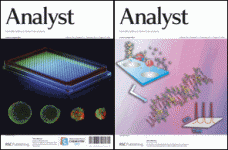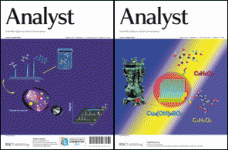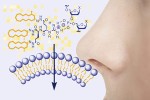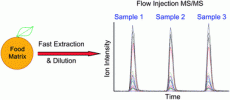Analyst Volume 136, Issue 4 is now online, with Comms on the covers:
On the front cover, work by Matt Trau and co-workers on a microparticle-based flow cytometry assay for the analysis of 5MeC-binding proteins, which may have potential in cancer detection.
Communication: Bisulfite-free analysis of 5MeC-binding proteins and locus-specific methylation density using a microparticle-based flow cytometry assay
Simon R. Corrie, Pavel Sova, Qinghua Feng, Tiffany Blair, Nancy B. Kiviat and Matt Trau
Analyst, 2011, 136, 688-691
DOI: 10.1039/C0AN00790K
The inside front cover features work by Daxiang Cui and co-workers on the use of magnetic nanoclusters for the detection of hepatitis B virus surface antibodies, showing potential for the diagnosis of infectious diseases.
Communication: The potential of magnetic nanocluster and dual-functional protein-based strategy for noninvasive detection of HBV surface antibodies
Hengyao Hu, Hao Yang, Ding Li, Kan Wang, Jing Ruan, Xueqing Zhang, Jun Chen, Chenchen Bao, Jiajia Ji, Donglu Shi and Daxiang Cui
Analyst, 2011, 136, 679-683
DOI: 10.1039/C0AN00517G
Both articles will be free to access for six weeks, so do take a look and leave your comments back here on the blog.


















